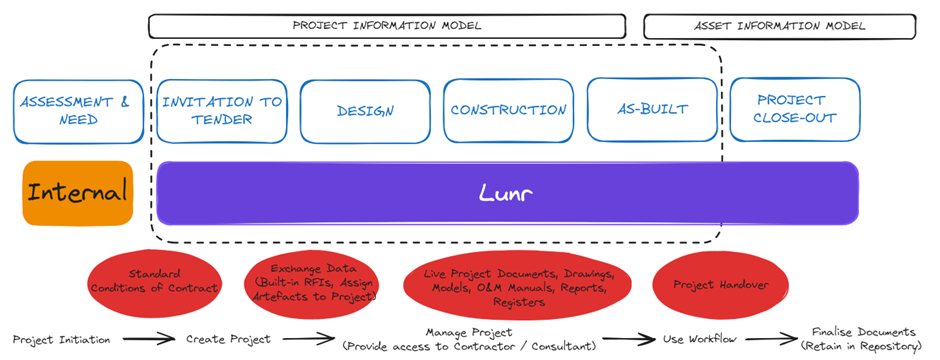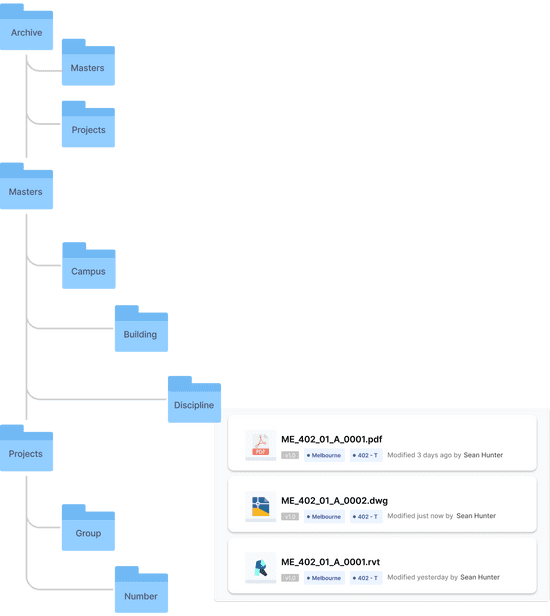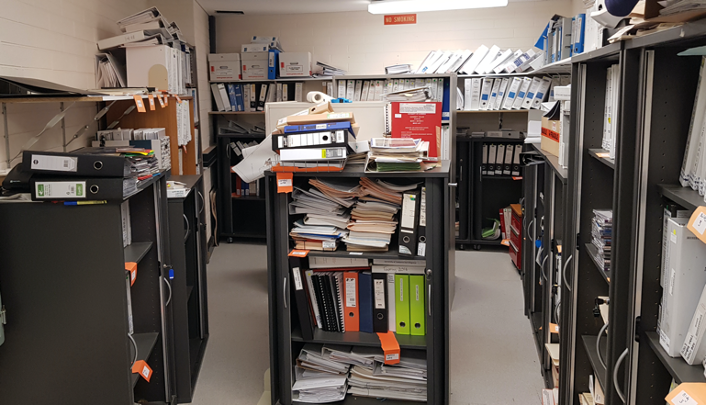Transitioning to BIM Within a CDE

Organisations worldwide have managed asset information and construction data in various systems for years. For the Client, as described in ISO 19650 as the appointing party, designated as the asset owner or organisation managing facilities, assets, and projects, there needs to be more clarity about which system manages the operational and historical project data.
With multiple ways of organising files using file management and records management solutions, there is now the impact of cloud systems, such as the evolution of Microsoft SharePoint. For many asset owner organisations, the everyday employee has been left to work with disparate systems and needs more simplicity in managing asset or project information.
Transitioning from Drawing Management System to Common Data Environment
For some organisations, mainly those heavily focused on asset-centric systems, such as our customers who use a Drawing Management System (DMS) like Meridian or Lunr, the transition to the Common Data Environment (CDE) is most likely more apparent.
The CDE forms an essential part of the ISO 19650 BIM Standard. The formation of a CDE has just evolved from best practice asset information, structured data, project information management, and collaborative working that has developed IT and digital transformation that a cloud system brings.
The CDE is described in ISO 19650-1, p.3.3.15, as
an agreed source of information for any given project or asset, for collecting, managing and disseminating each information container through a managed process.
For others, like the appointed parties who work for the appointing party, there already has been a focus on investing in data capabilities. The architectural, engineering, and construction (AEC) industry uses data to reduce project costs, ensure public safety, and meet regulatory requirements.
Now, the focus is on bringing all parties together in a 'single point of truth system'. The importance of data and technology is paramount, especially in these turbulent times. A Common Data Environment (CDE) ensures that knowledge is retained and efficiencies are increased. It optimises data to minimise waste, reduce project costs, and prevent loss of data during handover processes. With a CDE, you can be confident in the reliability and accuracy of your data, ensuring a secure and effective transition.
By embracing a CDE, you, as the asset owner, can unlock a world of opportunities. You'll gain more control over your assets and projects, using structured data to uncover valuable insights. Sharing information with others will improve your operations and knowledge of facilities and/or estates. Most importantly, you'll gain buy-in from all stakeholders, boosting technology adoption, productivity, and knowledge retention in a market that is constantly evolving.

